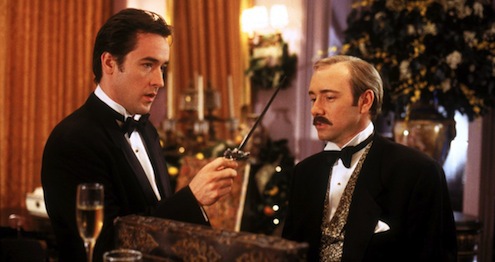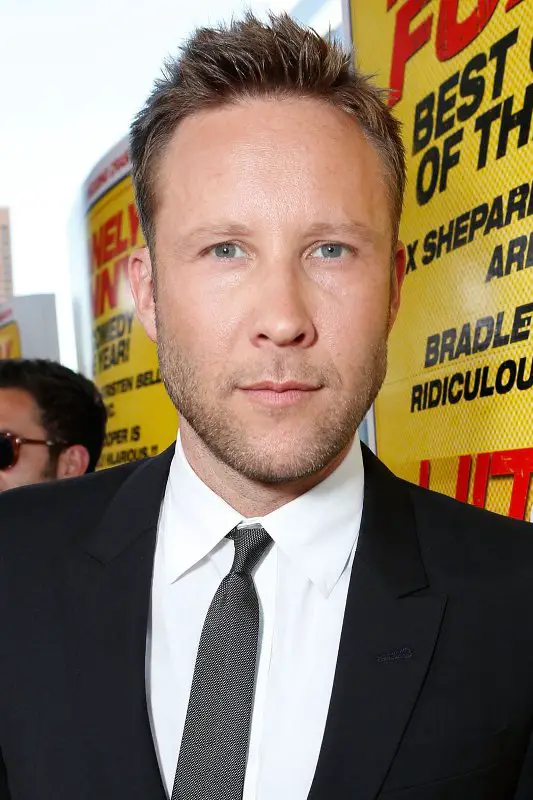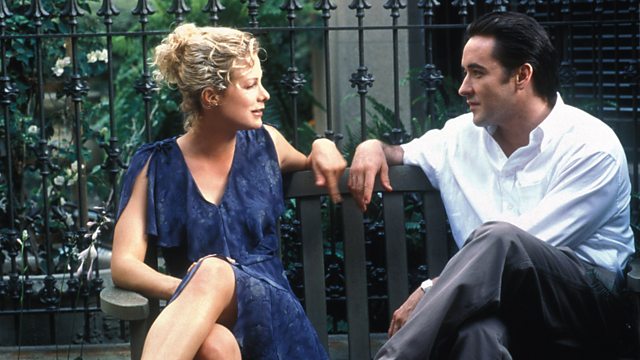- Midnight In The Garden Of Good And Evil Statue
- Midnight In The Garden Of Good And Evil Summary
- Midnight In The Garden Of Good And Evil Movie Streaming
Midnight in the Garden of Good and Evil might be the first true-crime book that makes the reader want to book a bed and breakfast for an extended weekend at the scene of the crime.' ( The New York Times Book Review ). Midnight in the Garden of Good and Evil begins with a portrait of Jim Williams, the man around. Midnight in the Garden of Good and Evil Readers of John Berendt's bestselling novel were bound to be at least somewhat disappointed by this big-screen adaptation, but despite mixed reaction from critics and audiences, there's still plenty to admire about director Clint Eastwood's take on the material.

Reading Guide Questions
Please be aware that this discussion guide will contain spoilers!
The questions, discussion topics, and author biography that follow are intended to enhance your group's reading of John Berendt's Midnight in the Garden of Good and Evil . We hope that they will provide you with new ways of looking at--and talking about--a book that Edmund White has called 'the best nonfiction novel since In Cold Blood.' Like Truman Capote's masterpiece, Midnight in the Garden of Good and Evil is the true story of a murder. It is also the portrait of a Southern city in all its charm and eccentricity and a comedy of manners that has pointed things to say about sex and gender, truth and rumor, and superstition and belief.
. We hope that they will provide you with new ways of looking at--and talking about--a book that Edmund White has called 'the best nonfiction novel since In Cold Blood.' Like Truman Capote's masterpiece, Midnight in the Garden of Good and Evil is the true story of a murder. It is also the portrait of a Southern city in all its charm and eccentricity and a comedy of manners that has pointed things to say about sex and gender, truth and rumor, and superstition and belief. The victim is Danny Hansford, a small-time hustler who, early on a Saturday morning in May 1981, was shot dead by his sometime employer Jim Williams in the latter's exquisitely restored house in Savannah, Georgia. As Berendt reconstructs Danny's death--and follows Williams's staggering four murder trials--he also presents us with a lovingly detailed social anthropology of Savannah, whose past is full of murders that have been covered up and cheerfully gossiped about for decades afterwards. The author keeps a discreet distance from his protagonists. His true object is to see how a crime engages the collective imagination of a city that is 'as remote as Pitcairn Island' [p. 36] and as decadent as Sodom, and whose citizens are so deliriously selfÐ absorbed that it takes a murder to shake them out of their usual preoccupations.
If Hansford and Williams occupy the foreground of Midnight in the Garden of Good and Evil, the background figures of Berendt's canvas sometimes eclipse them in interest and sheer perversity: a fading belle who packs a pistol in her décolletage; a charming, pianoÐplaying con man who moves like a hermit crab from one empty showplace house to the next, accompanied by his highÐliving entourage and pursued closely by his creditors; a moneyed dowager who conducts business from a cruising Mercedes limousine; a sour alcoholic inventor who claims to own a vial of poison so powerful that it could kill off the entire city; a voodoo priestess in purple shades; and a foul-mouthed black drag queen who passes so convincingly for a woman that she is able to extort abortion money from the parents of her white boyfriend. And Berendt himself becomes one of the book's characters, an ingenuous expatriate Yankee who, in the process of making himself at home in Savannah, manages to go everywhere, meet everyone, and ferret out every morsel of the city's delicious gossip--except, perhaps, the truth behind Danny Hansford's death.
For discussion
Midnight In The Garden Of Good And Evil Statue
- Midnight in the Garden of Good and Evil begins with a portrait of Jim Williams, the man around whom the book's 'plot' revolves. Yet the author sweeps Williams offstage after one chapter and we do not encounter him again until the end of Chapter 11, when we learn that he shot Danny Hansford. What does Berendt accomplish by doing this? Is Midnight truly Williams's story, and if not, who is its real protagonist?
- Do you come away from this book believing that Williams is guilty of murder? How does the evidence that surfaces during his trials reinforce or contradict the impression that Berendt conveys elsewhere in the book? How do Williams's friends view him? Is it possible to believe in Williams's guilt yet still feel sympathy for him? Where else does the author elicit sympathy for characters who are morally flawed and perhaps genuinely evil?
- In short order it becomes clear that Savannah is full of mysterious characters, from the man with the invisible dog to the salesman who makes up his left eye with purple eyeshadow while leaving the other unadorned for the benefit of his boss. How much do we end up knowing about the people in this book? Is it Berendt's intention to reveal his characters or to draw our attention to their eccentricities, the inconsistencies in the selves that they present to the world? How different would these characters be if they lived in a city like New York or Los Angeles?
- As elaborate as these façades are, Berendt suggests that they are also transparent. The salesman's boss knows that he wears makeup on one eye, just as none of Lee Adler's old associates buy his altruistic pretensions. Why, then, might the characters in this book maintain their various masquerades? Is Berendt saying anything about the façades that all of us adopt in order to survive?
- How does the transvestite Chablis embody contradictions that Berendt explores elsewhere in the book? Is Chablis Midnight's most deceitful character or its most honest one? What distinction does the author make between the Lady Chablis's 'act' and the social masquerades of Lee Adler, Joe Odom, or Jim Williams?
- Do you think of Chablis as male or female? Why has she chosen not to undergo sex-change surgery? By what logic can she say that her boyfriend--who knows her true gender--is 'straight' [p. 102]? For that matter, can Chablis be said to have a 'true' gender? How would you compare Chablis's brand of femininity to Serena Dawes's or Mandy Nichols's? What vision of gender does this book impart to us?
- Alongside his human characters, Berendt gives us detailed histories and descriptions of several houses. To what extent are his characters defined by the homes they live in and the objects they use to furnish them? Moreover, what role does geography, from the location of Joe Odom's latest apartment to Savannah's position on the Georgia coast, play in this book?
- Danny Hansford is only one of the many people whose violent deaths we learn about in the course of Midnight in the Garden of Good and Evil. Judging by their stories, what does Savannah (or Savannah society) deem grounds for murder? Why are so few of Jim Williams's friends disturbed by the charges against him? Given the casualness with which Savannahians greet the Hansford case, why are they so shocked by the news [p. 333] that their city has been declared the murder capital of the United States?
- Although Williams behaves as though he were innocent of any wrongdoing, he also goes to elaborate lengths to conceal the fact of his imprisonment from his clients. How do you account for this? In what ways are the contradictions in his conduct typical of his city?
- It is almost immediately obvious that Jim Williams is gay and that Danny is his gigolo, but no one comments on this until the first murder trial. Williams's greatest fear seems to be that his mother will learn the truth about his sexual orientation. Chablis claims that 'the South is one big drag show' [p. 101], but if so, it is one where four men can be acquitted of a brutal killing when the victim turns out to be homosexual [p. 205]. What roles do homosexuality and homophobia play in this book? How do Berendt's Savannahians--both gay and straight--variously conceal, deny, or accommodate their sexuality?
- 'We don't do black-on-white in Savannah,' Joe Odom tells Berendt. 'A lot may have changed here in the last twenty years, but not that' [p. 54]. What role does race--and the elaborate restrictions that surround it--play in this book? How would you characterize the relations between Berendt's white and black characters? What artifices have various Savannahians devised to cross the color line--or tunnel under it? What institutions have black Savannahians evolved on their side of that line?
- Early in the book, Joe Odom gives the author three rules for surviving in Savannah [p. 48]. What are these rules and how reliable do they turn out to be? What does Berendt accomplish by making his (and the reader's) principal guide turn out to be a professional con man?
- The 'Garden of Good and Evil' is Bonaventure cemetery, which the author visits at the book's beginning and end. What role do the dead play in Berendt's narrative? How do they influence its action and haunt the living characters? In what way does Savannah's attitude toward its dead seem more pagan than Christian?
- Frustrated by his attorneys' failure to win an acquittal, Williams hires a conjure woman to work on his behalf. How successful are Minerva's efforts compared to those of more conventional specialists? What beliefs underlie her magic? In what way can the belief systems of the book's other characters be described as magical?
- How do we end up feeling about the character of 'John Berendt'? What does the author accomplish by making himself a character in his book--or, rather, by creating a character who happens to have his name and profession?
- Was Danny Hansford responsible for his own death? Do you come away from this book believing that he was about to kill Williams or that he was merely what Spencer Lawton says he was: 'a pawn in a sick little game of manipulation and exploitation' [p. 229]? How do you feel on learning that commentators regard Danny as merely 'a good time not yet had by all' [p. 178]? How did Danny fit into Savannah's rigidly stratified society? Why--and at whom--might he be laughing at the book's climax?
Suggestions for further reading
Honoré de Balzac, The Human Comedy
Truman Capote, In Cold Blood and Music for Chameleons
Henry James, The Bostonians and Washington Square
F. Scott Fitzgerald, The Great Gatsby
Richard Gillman, Decadence: The Strange Life of an Epithet
Zora Neale Hurston, Of Mules and Men
Norman Mailer, The Executioner's Song
Edgar Lee Masters, Spoon River Anthology
Flannery O'Connor, 'A Good Man Is Hard to Find' and 'The Violent Bear It Away'
Marcel Proust, Remembrance of Things Past
Natalie Robbins, Savage Grace
Calvin Trillin, Killings
Diana Trilling, Mrs. Harris: The Death of the Scarsdale Diet Doctor
Mark Twain, Innocents Abroad and Roughing It
Eudora Welty, The Optimist's Daughter
Edith Wharton, The Age of Innocence and The House of Mirth
Page numbers refer to the Vintage paperback edition.
Reading group guide and suggested reading list reproduced with the permission of the publisher, Vintage.

Unless otherwise stated, this discussion guide is reprinted with the permission of Vintage. Any page references refer to a USA edition of the book, usually the trade paperback version, and may vary in other editions.
Midnight In The Garden Of Good And Evil Summary
'Midnight in the Garden of Good and Evil,' by John Berendt
When the author, John Berendt, wrote 'The Book' as it is now referred to by residents of Savannah, Georgia, he did what many writers do. He combined fact with fiction.
'The Book' turned into the movie entitled, 'Midnight in the Garden of Good and Evil.' Berendt's book remained on the New York Times best seller list for 216 weeks following its debut. The movie adaptation debuted in 1997, with actor, Clint Eastwood, as director and producer and John Lee Hancock as screenwriter. With a $30 million budget, the film grossed $25.1 million in sales.
The True Story Behind Midnight in the Garden of Good and Evil
Berendt's book was considered 'faction.' This simply means it is part fact and part fiction.
The characters in the story actually were residents of Savannah. Without realizing it, Berendt exposed the dark side of Savannah society, a relatively insular, highly traditional composition of diverse individuals.
The truth of the story highlights the crime of murder by wealthy, gay Savannah socialite, Jim Williams, and his employee in his antique business and lover, Danny Hansford.
The remarkable part of the crime is that Jim Williams was tried four times for Hansford's murder. This was omitted from the movie version. The actors who played Jim Williams and Danny Hansford, Kevin Spacey and Jude Law, respectively, bear a striking resemblance to the murderer and victim.
Many of Berendt's characters such as the voodoo woman, Minerva, the transgendered nightclub entertainer, Chablis and Joe Odom were actually Savannah residents. So popular was the book that Savannah saw a large increase in tourism. One of the attractions was the 'Bird Girl' sculpture seen in the movie. It was originally located in Bonaventure Cemetery. It draws thousands of tourists each year.
Highlighting the Truth
Midnight In The Garden Of Good And Evil Movie Streaming
Perhaps the author intended to expose the mirror image of life in Savannah and felt the murder of Danny Hansford, shocking to residents of 'this fair city,' as lawyer Sonny Seiler states in the movie, created enormous interest in antebellum homes restored to classic southern elegance. Other features of this city include its deeply embedded traditions like the practice of voodoo and its love of classical and jazz music.
The book is about people in their most naked reality and that good and evil combine to prove truth is stranger than fiction. For example, the high society in Savannah projects the image of style and 'class,' that covers darker characteristics in their personalities.
In Savannah, residents are aware of homosexuals and the transgendered. They choose a cosmopolitan attitude that dismisses these lifestyles with one hand and ingratiates it into their lives with the other.
This discloses truth in the voodoo belief as Minerva stated, 'One hour before midnight for doing good, one hour after midnight for evil.' This belief is wholly applicable to characters in the true story of Jim Williams and Danny Hancock.
Jim Williams symbolizes the good in the hour before midnight and Danny Hancock the evil the hour after midnight. In the real world, the upper-class often crosses from good into evil in the garden of life.

Bookatourandlearnmore
The book The Lawyer Games, tells new information about the trials, and testimonies, and photographs that really went on in the court room.
Learn more about this fascinating story from expert tour guide, Angela Sergi at Savannah Heritage Tours in Savannah, GA. Unlike other tour companies, Angela focuses more on the trial than the Voodoo.
Comments are closed.